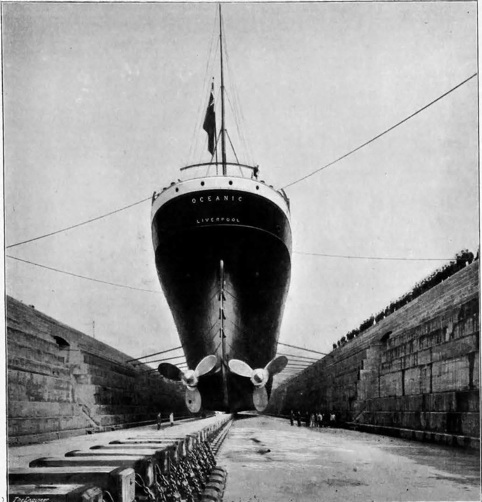The Engineer of the late 19th century was full of stories of giant ships, but it reserved special acclaim for the RMS Oceanic, which at 705 ft long and 17,272 tons, was for a time, the largest ship in the world.
Built in Glasgow by Harland and Wolf and designed by Thomas Ismay - founder of the White Star Line - the ship’s maiden voyage saw it travel down the coast to Liverpool’s Canada Graving dock. The Engineer was there to report on its arrival.

‘The presence of the Oceanic in the Canada graving dock - a view of which we herewith present - forms a noteworthy and unique circumstance in the annals of shipping and docks; being nothing less that the largest vessel in the world within the largest and newest graving dock in the world.’
Before describing the ship, The Engineer marvelled briefly at the graving dock itself, which had been built to accommodate the vessel so that its vast hull could be cleaned and painted. ‘It is 925ft in length, has an entrance width of 94 ft and its complement of 80,000 tons of water can be pumped out in one hour and forty minutes.’
The article describes the ship as ‘a magnificent example of shipping enterprise and acumen - a triumph of shipbuilding powers and skill, and a marvellous advance on all previous ocean, mail and passenger vessels as regards dimensions, tonnage, accommodation and outfit.’
Unusually, The Engineer chose to focus on the interior layout of the ship rather than its design and construction (which had been covered in an earlier article) and the title’s lucky reporter was clearly impressed by what he found aboard writing that ‘among the first and most striking impressions obtained on going aboard is one of spaciousness and freedom of movement.’
The reporter was particularly impressed by the provision made for vessel’s smokers . Whilst today’s tobacco-users must skulk and shiver in fenced-off outdoor areas, Oceanic passengers could chuff away in a dedicated suite decorated with mahogany sea-nymphs, embossed leather walls, and oil paintings representing the life of Columbus .
RMS Oceanic was commissioned into Royal Navy service as an armed merchant cruiser at the start of World War 1. Following a navigation error, the ship ran aground on the notorious Shaalds of Foula, a reef off the coast of Shetland. She was the first Allied passenger ship to be lost in the war. The last remains of the wreck were recovered in 1979.
The full article can be read here.




Nanogenerator consumes CO2 to generate electricity
Nice to see my my views being backed up by no less a figure than Sabine Hossenfelder https://youtu.be/QoJzs4fA4fo